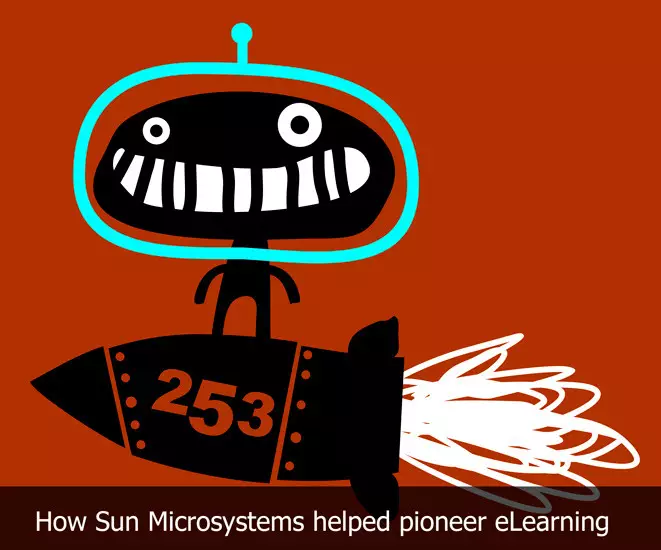eLearning Pioneers: Sun Microsystems

For Millennials, eLearning is a fact of life. But for the older generations, it was a really big deal when eLearning came on the scene. The word wasn’t even coined until 1999 during a Los Angeles seminar conducted by CBT Systems. Whether it’s called eLearning, online learning or virtual learning, computer company Sun Microsystems was an early pioneer that helped usher in the digital learning age.

Several years before people started calling it eLearning, Sun Microsystems realized there was a big problem brewing. The company was giving all of one week of on-site, face-to-face training to new sales staff while competitors Hewlett Packard and IBM had both moved up to six weeks of training for new hires. Unfortunately, when Sun proposed the expansion of training to two weeks, sales managers actually booed the idea.
With the rapid growth of the computer market and ever-shortening product development cycles, they simply couldn’t afford to have people out of the field in training that long. Even the travel and boarding expenses were starting to add up to serious money as the company was hiring upwards of 100 new sales people each month, to the tune of millions of dollars each year.
The company needed to come up with a new solution, and what was created was called SunTAN (Training Access Network). Just the act of figuring out how to let some of this training occur off-site forced a complete re-thinking of how learning occurred along some core dimensions such as the following:
- Teacher-focused instruction became learner-focused learning.
- The usual single-disciplinary approach became an interdisciplinary one that brought together different bodies of information.
- Drills and problems were dialed back to emphasize critical thinking and problem-solving skills.
- Individual learning was re-conceptualized into collaborative efforts and learning groups.
- Classrooms became communities that gathered according to interest and skills instead of availability or geography.
- Defined learning times became more continual learning.
- The lines that typically divide learning and teaching became much blurrier.
And SunTAN accomplished all of this in an online, web-based environment that included the following features:
- Profiles for each individual learner.
- Development of tailored learning paths.
- Registering and tracking functions.
- Feedback and assessment in an adaptive context.
- Support systems for sales staff.
- Management of competencies.
- Robust reporting for all levels.
There was still some amount of instructor-led training, but it was greatly reduced from what it was before. But having a big chunk of the learning take place online both before and after the in-person trainings made a huge difference.
The SunTAN system quickly morphed from its initial new-hire focus into all kinds of useful learning experiences. One that was quickly adopted was a just-in-time training approach to occur just before an actual sales call. Perhaps the greatest testament to SunTAN’s power is how often its “graduates” continue to access the system for information, both for themselves and their teams.
The system continued to evolve, eventually settling into three different ways to access its host of learning “objects” (chunks of content in various formats): A prescribed curriculum, the just-in-time sales support, and a free-for-all search to support anyone’s need for information.
It was interesting for Sun’s eLearning managers to see a natural progression towards shorter and shorter learning objects all the way down to 3-5 minutes, which is a lot shorter than some companies that use 60-90 minute chunks.
One way to measure the success of the system was to look at how long it takes new sales hires to hit their quotas, a function of good training and learning. The time for new hires to hit quota was reduced from 15 months to just 6 months. The value of freeing up an additional 9 months of sales time for nearly 1,500 people was roughly valued at a very conservative $100 million of incremental revenue. It would be easy to argue that it was quite a lot more than that.
Coming up with solid numbers like that also tends to get you the executive support you need from your organization’s leader(s) to keep such programs going and expanding. Sun’s unique approach in the early years of eLearning is an inspiring example of innovation to make learning work in a rapidly changing environment.